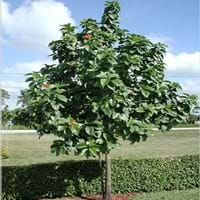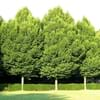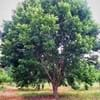Life Span
Perennial
Perennial
Origin
Europe, Turkey
Eastern Africa, Southern Asia, Southeastern Asia, Melanesia, Micronesia, Polynesia, Australia
Types
Not available
Mareer, Manjak
Habitat
hedge rows, Woodlands
Saline Soils, Sandy areas
USDA Hardiness Zone
2-9
10-15
AHS Heat Zone
Not Available
12-10
Sunset Zone
Not Available
H1, H2
Habit
Upright/Erect
Oval or Rounded
Flower Color
Yellow, Green, Orange Red
White, Yellow, Gold, Orange Red
Flower Color Modifier
Bicolor
Bicolor
Fruit Color
Green
Light Green, Chocolate
Leaf Color in Spring
Light Green
Green
Leaf Color in Summer
Dark Green
Green
Leaf Color in Fall
Lemon yellow, Yellow green, Orange Red
Green
Leaf Color in Winter
Not Available
Green
Plant Season
Summer, Fall, Winter
Spring, Summer, Fall, Winter
Sunlight
Full Sun, Partial Sun
Full Sun
Type of Soil
Loam
Clay, Loam, Sand
The pH of Soil
Acidic, Neutral
Acidic, Neutral, Alkaline
Soil Drainage
Average
Average
Bloom Time
Spring
Indeterminate
Tolerances
Drought, Pollution, Variety of soil types
Drought, Salt
Where to Plant?
Ground
Ground
How to Plant?
Grafting, Seedlings
Seedlings, Stem Cutting
Plant Maintenance
Low
Medium
Watering Requirements
Average Water Needs, Do Not over Water, Keep the ground moist but not water-logged, Requires regular watering
Average Water Needs
In Summer
Lots of watering
Lots of watering
In Spring
Moderate
Moderate
In Winter
Average Water
Average Water
Soil pH
Acidic, Neutral
Acidic, Neutral, Alkaline
Soil Type
Loam
Clay, Loam, Sand
Soil Drainage Capacity
Average
Average
Sun Exposure
Full Sun, Partial Sun
Full Sun
Pruning
Cut or pinch the stems, Remove damaged leaves, Remove dead branches, Remove dead leaves
Pinch or prune as they grow to promote branching and bushiness, Remove damaged leaves
Fertilizers
All-Purpose Liquid Fertilizer, Nitrogen, Water soluble fertilizers
All-Purpose Liquid Fertilizer
Pests and Diseases
Aphids, Caterpillars, Powdery mildew
Root rot, Snails
Plant Tolerance
Drought, Pollution, Variety of soil types
Drought and Salt
Flowers
Insignificant
Showy
Flower Petal Number
Not Available
Single
Fragrant Leaf
Not Available
No
Foliage Texture
Medium
Coarse
Foliage Sheen
Glossy
Glossy
Attracts
Birds, Not Available
Birds, Butterflies
Allergy
Asthma, conjunctivitis, Pollen, Rhinitis
Dizziness, Throat itching, Vomiting
Aesthetic Uses
Cottage Garden
Cottage Garden
Beauty Benefits
Skin irritation, Stops hair loss
Making cosmetics, used as a dye
Environmental Uses
Air purification, Shelter for wildlife
Absorbs greenhouse gases, No fertilizer, pesticides, or herbicides needed, Shadow Tree
Medicinal Uses
Cold, Cough, Diarrhea, Hair Loss, Headache, hemorrhoids, Rheumatism, Sore throat
Acne, Aging, Hair Loss
Part of Plant Used
Leaves
Flowers, Fruits, Leaves
Other Uses
Cosmetics, Used as Ornamental plant, Used for its medicinal properties
Making Shampoo, Showy Purposes, Used as Biofuel, Used as Ornamental plant
Used As Indoor Plant
No
No
Used As Outdoor Plant
Yes
Yes
Garden Design
Feature Plant, Shade Trees
Edible, Shade Trees, Street Trees, Tropical
Botanical Name
Carpinus betulus
CORDIA subcordata
Common Name
Common Hornbeam, European Hornbeam
Beach Cordia, Island Walnut, Kou, Sea Trumpet
In Hindi
हानबीन
Cordia subcordata
In German
Hainbuche
Cordia subcordata
In French
charme
Cordia subcordata
In Spanish
carpe
Cordia subcordata
In Greek
γαύρος
Cordia subcordata
In Portuguese
choupo-branco
Cordia subcordata
In Polish
grab
Cordia subcordata
In Latin
Item carpinus
Cordia subcordata
Phylum
Magnoliophyta
Magnoliophyta
Class
Magnoliopsida
Magnoliopsida
Family
Betulaceae
Boraginaceae
Clade
Angiosperms, Eudicots, Rosids
Angiosperms, Asterids, Eudicots
Tribe
Not Available
Not Available
Subfamily
Coryloideae
Not Available
Number of Species
Not Available
Importance of Hornbeam and Kou
Want to have the most appropriate plant for your garden? You might want to know the importance of Hornbeam and Kou. Basically, these two plants vary in many aspects. Compare Hornbeam and Kou as they differ in many characteristics such as their life, care, benefits, facts, etc. Every gardener must at least have the slightest clue about the plants he wants to plant in his garden. Compare their benefits, which differ in many ways like facts and uses. The medicinal use of Hornbeam is Cold, Cough, Diarrhea, Hair Loss, Headache, hemorrhoids, Rheumatism and Sore throat whereas of Kou is Acne, Aging and Hair Loss. Hornbeam has beauty benefits as follows: Skin irritation and Stops hair loss while Kou has beauty benefits as follows: Skin irritation and Stops hair loss.
Compare Facts of Hornbeam vs Kou
How to choose the best garden plant for your garden depending upon its facts? Here garden plant comparison will help you to solve this query. Compare the facts of Hornbeam vs Kou and know which one to choose. As garden plants have benefits and other uses, allergy is also a major drawback of plants for some people. Allergic reactions of Hornbeam are Asthma, conjunctivitis, Pollen and Rhinitis whereas of Kou have Dizziness, Throat itching and Vomiting respectively. Having a fruit bearing plant in your garden can be a plus point of your garden. Hornbeam has no showy fruits and Kou has no showy fruits. Also Hornbeam is not flowering and Kou is not flowering . You can compare Hornbeam and Kou facts and facts of other plants too.





